“In the Age of the Almighty Computer, drones are the perfect warriors. They kill without remorse, obey without kidding around, and they never reveal the names of their masters.”
~Eduardo Galeano
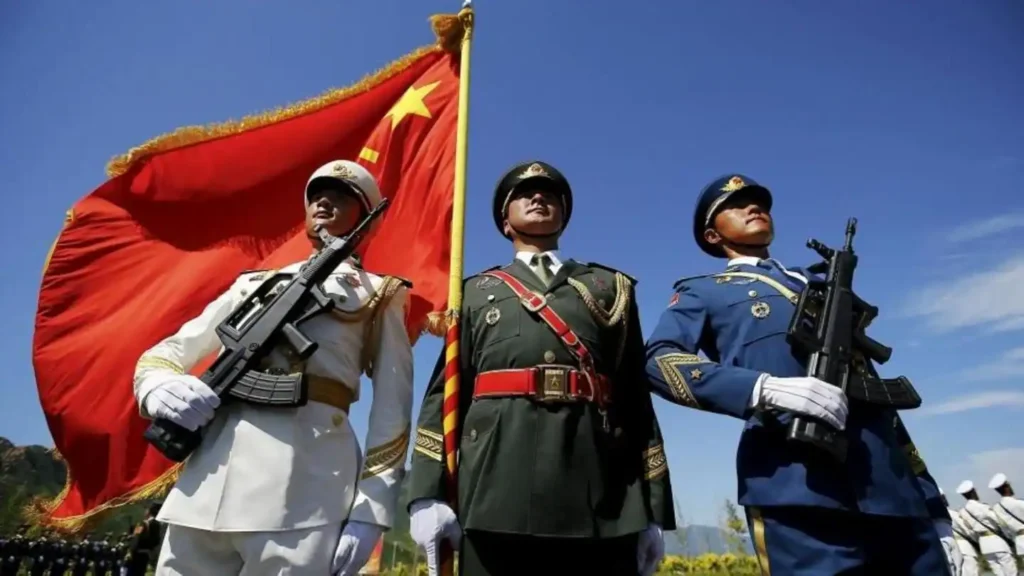
China is actively enhancing its military capabilities to secure an influential position in a multipolar world. The People’s Liberation Army (PLA) has historically adhered to a strategy termed “Active Defence,” which involves strategic defence with the capacity for offensive action when necessary. Currently, this strategy is being adapted to extend China’s global influence, particularly within the Asia-Pacific region.
In the Western Pacific, China is developing a robust defence mechanism known as Anti-Access/Area Denial (A2/AD). This system is designed to secure military victories using advanced technology. China is investing in capabilities intended to challenge American maritime and aerial dominance, near the First Island Chain. This strategic approach poses a threat to regions such as the Ryukyu Islands and the Philippines, aiming to curtail the operational reach of the U.S. Navy.
In the Pacific region, military efficacy is heavily contingent on logistics, encompassing the supply and maintenance of forces. The region’s expansive distances and geographical features present four primary logistical challenges: distance, water, time, and scale issues. These factors complicate the support of military operations conducted far from the domestic bases, the provision of resources for forces, such as fighter jets and naval vessels, necessitates a robust supply chain. Many Pacific islands have limited infrastructure, rendering them susceptible to disruptions, to sustain a strategic foothold, nations must invest in fortified bases, which entails significant financial expenditure. Unmanned Systems offer potential solutions to these logistical challenges, these systems, particularly small and low-profile ones, require less fuel and resources than traditional military operations; by employing them, nations can maintain a formidable presence and defence posture without relying on large, vulnerable supply hubs.
Unmanned systems are ideally suited for continuous surveillance of the vast Pacific region. Off-the-shelf drones are revolutionising tactical operations by providing cost-effective and rapid ISR capabilities. The U.S. Army employs initiatives such as Transforming in Contact (TiC) to authorise and deploy these drones via the Blue UAS Cleared List, facilitating procurement by government partners. Unmanned Aerial Vehicles (UAVs) are indispensable for acquiring detailed imagery of small island nations. Satellite imagery often lacks resolution for small islands, making local UAV deployment the optimal method for critical mapping and security assessment. Unmanned systems are highly effective for both defensive and offensive operations, as they can deliver a significant impact without endangering human lives, making them ideal for deployment in hazardous environments.
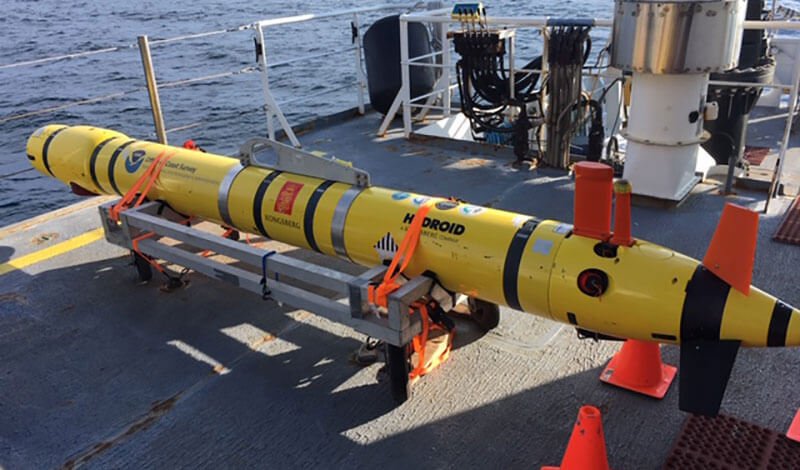
In maritime context, Unmanned Underwater (UUVs) and Surface Vehicles (USVs) are essential for sustained Maritime Domain Awareness (MDA), UUVs play a crucial role in collecting tactical intelligence, including Signal, Electronic, and Imaging Intelligence (SIGINT, ELINT, IMINT). They also provide vital meteorological and oceanographic information. Both UUVs and USVs, with operational durations ranging from hours to days, have already been integrated with existing support systems to detect and classify mines, rendering them indispensable for Mine Countermeasure (MCM) operations, these can be repurposed for other roles. However, current UUVs require a manned platform and human intervention for numerous missions.
The utilisation of armed unmanned platforms facilitates active sea denial, which is crucial for countering Chinese naval capability. A pertinent example is the Navy-Marine Expeditionary Ship Interdiction System (NMESIS), an unmanned vehicle equipped with a missile system capable of carrying two Naval Strike Missiles (NSM). The NSM can engage and sink vessels from distances exceeding 115 miles. The strategic deployment of the NMESIS on critical islands, effectively transforms these locations into formidable, unmanned bases capable of obstructing the People’s Liberation Army Navy’s (PLAN) movement through maritime choke points.
Advanced unmanned platforms are specifically designed for roles such as electronic warfare, precision strike, and aerial missions. Systems such as the proposed Vectis platform (a stealthy collaborative combat aircraft) are well-suited for the vast distances of the Pacific region, providing essential intelligence to commanders for informed targeting decisions.
The employment of unmanned systems fundamentally alters the approach to areas with strong defences. China’s strategy aims to deter large U.S. and allied forces, systems such as the NMESIS offer substantial offensive capabilities without necessitating human presence on board, thereby facilitating their deployment in high-risk areas. Unmanned systems have enabled a shift in military strategy from avoiding strongly defended zones to employing numerous unmanned systems to overwhelm the defences. Consequently, adversaries are compelled to expend considerable resources to counter these threats.
Tailored Requirements
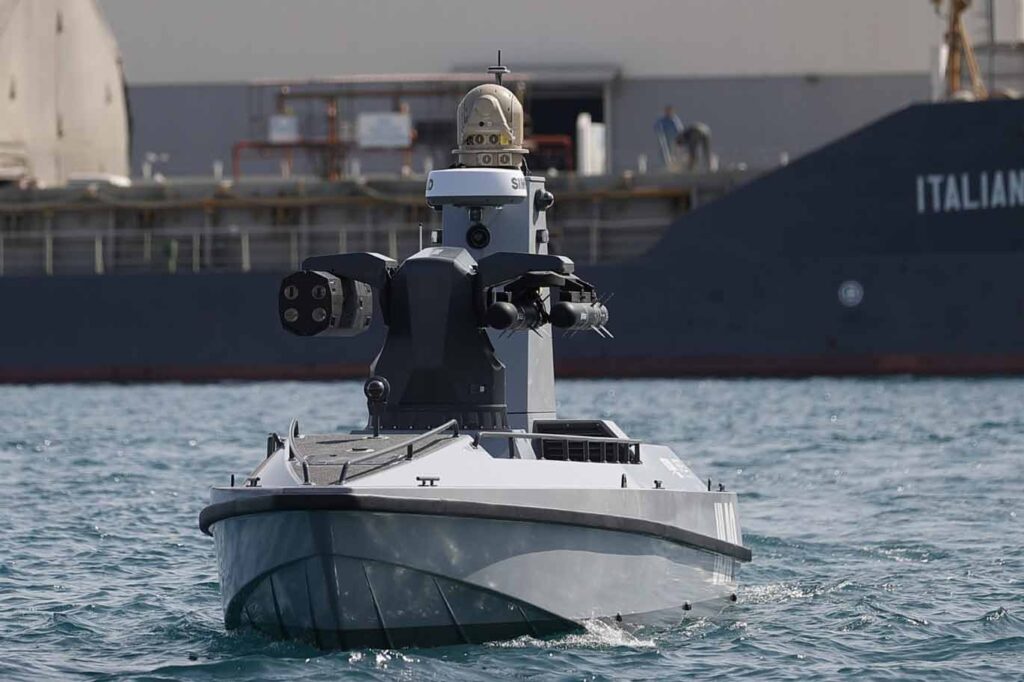
The vastness of the theatre requires a tailored Unmanned Systems strategy based on the specific threats and infrastructure of each island group.
Ryukyu Islands and the Philippines (First Island Chain)
The Ryukyu Islands and the Philippines are crucial in controlling China’s naval capabilities. The primary objective should be to enhance defence mechanisms and impede the operations of Chinese naval forces. This region requires the deployment of robust and advanced systems, offensive USVs such as the NMESIS, are crucial for obstructing adversarial naval vessels. The deployment of the NMESIS on islands such as Ishigaki by the U.S. exemplifies the rapid transformation of remote islands into unmanned strategic bases. Additionally, specialised Electronic Warfare (EW) UAVs are essential for disrupting enemy communications and sensor systems. A significant challenge in this context is formidable enemy defences, necessitating strong countermeasures against jamming.
Melanesia, Micronesia, and Polynesia (Second and third Chains)
In these regions, the emphasis is on maritime surveillance and countering adversarial influences, the region requires systems with extended operational endurance. Endurance UAVs and small Unmanned Aerial Systems (UAS) are vital for the comprehensive mapping of small islands. Small USVs and UUVs are necessary for oceanographic data collection and safeguarding local infrastructure. Given the limited land availability and vulnerable infrastructure, operational plans must be adaptable and dispersed across the region, success will hinge on establishing maintenance centres in collaboration with regional partners, necessitating cooperative efforts and the establishment of standardisation agreements.
Aleutian Islands
The Aleutian Islands require specialised systems for long-range surveillance and deterrence of northern threats; systems must be capable of withstanding harsh weather conditions and focusing on specialised capabilities. This includes long-range UAVs for surveillance in extreme environments and robust UUVs for underwater monitoring, particularly in submarine warfare and surveys in cold regions. The primary challenge is the severe environmental conditions, which increase the cost of acquisition and maintenance of these systems.
The Swarm Dynamic
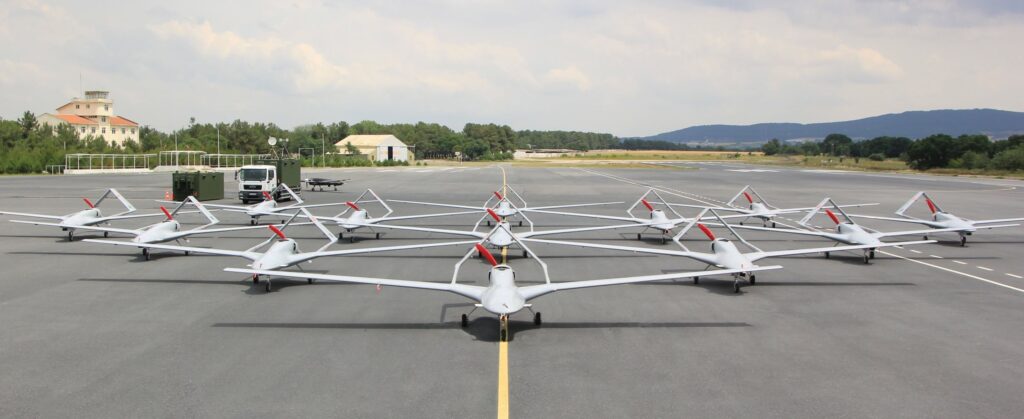
Azerbaijan effectively employed drones to secure a victory over Armenia. These drones were instrumental in the destruction of numerous Armenian military assets, including 144 tanks, 35 infantry-fighting vehicles, 19 armoured personnel carriers, and 310 trucks.
Utilizing drone swarms offers strategic advantages for small island nations in defence against larger powers such as China, it is a tactic referred to as the “porcupine strategy.” This approach leverages numerous cost-effective drones to counter the sophisticated and expensive weaponry of a major adversary.
The core strategy involves deploying multiple inexpensive and straightforward drones to confuse and overwhelm the costly defence systems of adversaries. Drones are a more economical alternative to traditional military assets such as warships and fighter jets, deploying a swarm of affordable drones compels adversaries to expend costly missiles, imposing a financial burden on the attacker. A drone swarm can present an excessive number of targets for enemy defences, complicating their ability to mount an effective response to the attack, as drones are unmanned, their deployment in high-risk areas lessens the potential for human casualties, which is a critical consideration for smaller nations. Drones can operate independently, ensuring mission continuity even in the event of losses or communication disruptions, further, drones can monitor and engage over extensive maritime areas, thereby maintaining threats at a distance from primary islands.
Unmanned Aerial Vehicles (UAVs) – Air Domain
UAV swarms can conduct prolonged surveillance over vast areas, providing early warnings of enemy movements and enhancing situational awareness. Economical UAVs equipped with jamming technology can disrupt enemy radar and communications, additionally, they can serve as decoys to deplete enemy missile stockpiles. Drones armed with small munitions can target critical components of enemy vessels or disrupt landing operations during assaults.
Unmanned Surface Vehicles (USVs) – Surface Domain
Drone swarms can patrol strategic maritime zones and ports to detect and neutralise potential threats. Agile USVs equipped with explosives can engage larger vessels from multiple vectors, complicating defensive measures and inflicting significant damage. USVs possess the capability to manoeuvre and deploy or support UUVs and smaller UAVs, this facilitates a distributed defence mechanism around the primary island.
Unmanned Underwater Vehicles (UUVs) – Underwater Domain
UUV formations equipped with sonar or acoustic sensors monitor coastal and deep-sea regions. They are tasked with detecting large submarines and smaller submersibles, additionally, they can deploy intelligent sea mines of various sizes to obstruct enemy routes. UUV swarms can clandestinely approach and compromise critical underwater infrastructure, such as communication cables and oil or gas pipelines, compelling the adversary to allocate substantial resources for their protection. Small UUVs can conduct covert reconnaissance of landing zones or relay targeting data to surface and aerial units (USVs/UAVs) prior to engagement.
The deployment of drone formations across various domains transforms the defence strategy of a small island from mere territorial protection to actively hindering adversarial access. The objective of the drone swarms is not to secure victory in a protracted conflict but to render any assault or blockade prohibitively expensive for the adversary, thereby deterring potential aggression. Major powers rely on intricate Command, Control, and Communications (C3) networks, drone clusters can target communication nodes, command vessels, and sensors, thereby impairing an adversary’s situational awareness. By dispersing numerous cost-effective and resilient units across the maritime domain, a small nation can eliminate any singular target for the adversary, necessitating a prolonged and exhaustive engagement against a dispersed network.
Their strength lies not in superior technology but in attrition, which inflicts significant losses on adversaries.
The crux of swarm warfare is not solely drone technology but the logistical and support infrastructure underpinning it. In conflicts involving island chains, victory will favour those with robust and agile supply networks for cost-effective drones, therefore, island nations must establish an efficient local supply system to meet their logistical demands.
Multilayered Defence against Enemy Swarms
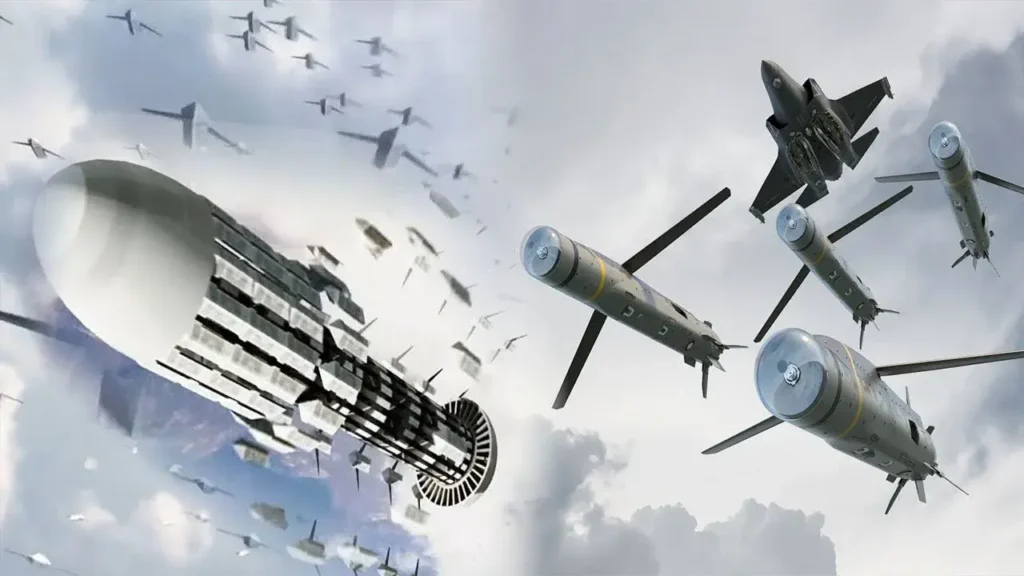
The defence of islands against a drone swarm attack, necessitates a multilayered approach to counter threats from aerial, surface, and underwater domains. Effective defence begins with the detection and identification of potential threats to national security. Systems for defence of islands must be equipped with sensors, such as radar, radio frequency (RF) detectors, and cameras, to promptly detect and classify the threats posed by drones and surface vehicles. In the context of safeguarding ships and coastal regions, systems such as SEA WARDEN play a crucial role in defending against uncrewed threats, these systems employ detection mechanisms and various tools to counteract a range of threats, from small drones to large vehicles.
Non-kinetic methods provide an efficient and often cost-effective means of neutralising enemy drone swarms without resorting to expensive weaponry, some of the methods are:
High-power microwave (HPM) Defence: High Power Microwave (HPM) systems, such as the Integrated Fires Protection Capability High-Power Microwave (IFPC-HPM) Generation II, are essential for countering large-scale attacks. HPM devices generate an Electromagnetic Pulse (EMP) via an antenna, capable of disrupting radio signals and damaging the electronics of multiple drones simultaneously, HPM offers a rapid, non-physical means of safeguarding critical assets. However, these systems are associated with significant costs, with costs exceeding $40 million.
Electronic Warfare (EW) Countermeasures: More cost-effective alternatives include handheld and fixed Radio Frequency (RF) jamming systems that obstruct communication on common drone frequencies, such as GPS, 2.4GHz, and 5GHz. GPS spoofers represent a more sophisticated option, capable of altering a drone’s navigation signal to redirect it to a controlled area, thereby providing comprehensive protection against drone intrusions. However, EW systems may inadvertently disrupt other friendly radio communications or cause the targeted drones to crash in unwanted areas.
Anti-Unmanned Underwater Vehicle (UUV) Measures: Defence against advanced UUV threats, employed for covert intelligence and mine warfare, necessitates specialised underwater surveillance. The most effective current anti-UUV strategies utilise friendly UUV, and unmanned surface vehicle (USV) systems equipped with specialised sensors for threat detection and classification. As technology advances, these systems are expected to operate more autonomously; however, they currently require hosting by manned platforms and considerable human oversight.
Procurement Strategy
An effective procurement strategy should balance quantity, quality, efficiency, cost, and advanced capability, considering the financial capacities of the involved nations. Unmanned Systems acquisition should be divided into the following three levels to optimise economic efficiency and security:
Mass and Attrition (Commercial Off-The-Shelf): This level emphasises high volume and low cost, encompassing small Unmanned Aerial Systems (sUAS) and First-Person View (FPV) drones from vendors approved by allied governments, such as those on the Blue UAS Cleared List. Their roles include tactical and short-range intelligence, force protection, and swarm offense/defence. Economic efficiency is achieved by accepting high failure rates of up to 20% while benefiting from low initial costs. This constitutes the foundational level for all Pacific Island Countries (PICs).
Endurance and Specialisation (Pilot in Command Utility): This level comprises mid-range endurance UAVs and persistent, low-signature USVs/UUVs. Their roles involve long-range Maritime Domain Awareness, target acquisition, and data collection across extensive oceanic areas. These unmanned systems are crucial for regions such as Melanesia, Micronesia, and Polynesia, where distance poses significant challenges. Procurement should prioritise interoperability standards for shared maintenance and data among partner nations.
High-End Kinetic and Counter-Anti-Access/Area Denial (A2/AD): This level involves high-cost, military specification, long-range systems, such as USV-based Anti-Ship Missile launchers (NMESIS) and advanced EW UAVs. Their roles encompass strategic interdiction, A2/AD contestation, and force projection in the Pacific region. These systems incur high initial and maintenance costs and are primarily intended for major allies, including Japan, the United States, and the Philippines, operating within the First Island Chain.
Pacific Island Countries (PICs) encounter financial and economic challenges, necessitating innovative financial strategies to enhance security. PICs should leverage international aid and security funding to acquire unmanned systems. United States has allocated substantial financial resources to support the Indo-Pacific region, which the PICs should capitalise on. PICs should explore leasing or borrowing drones, allowing for manageable monthly payments and immediate utilisation, thereby conserving financial resources for other essential needs.
Countries within the Pacific region should engage in collaborative efforts concerning unmanned systems procurement as well as licensed manufacture to become self-reliant. By pooling resources and establishing common standards, cost reductions can be achieved, such cooperation would enable smaller nations to access critical security technology as well as achieve economies of scale.
The procurement of Unmanned Systems is intrinsically linked to the economic stability of small island nations, these countries are susceptible to economic challenges and rely heavily on critical infrastructure, such as ports and airports. Acquiring traditional defence mechanisms would be prohibitively expensive for the island nations. By prioritising cost-effective unmanned systems, these nations can swiftly enhance security and safeguard their economies, creating a positive feedback loop in which economic security measures bolster economic stability.
Way Ahead
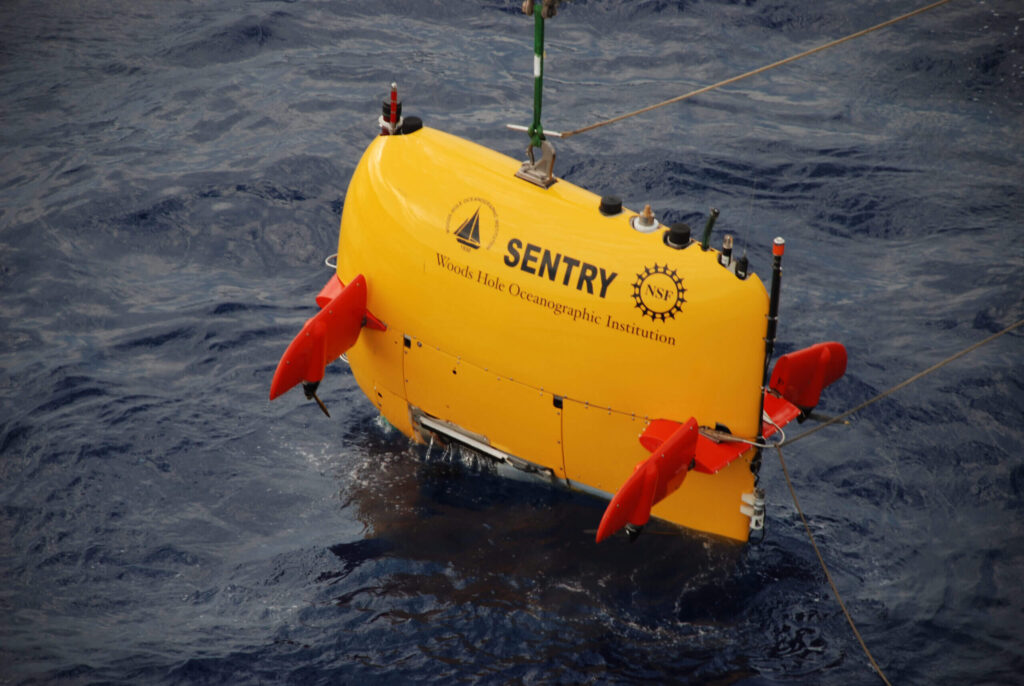
The deployment of UAVs, USVs, and UUVs is imperative to counteract Chinese threats and address logistical challenges in the Pacific. Unmanned Systems represents the optimal approach for small islands and their allies to maintain a robust presence and defend against advanced threats in the Indo-Pacific region.
Major allies, such as Japan, the Philippines, and the United States, should expedite the deployment of unmanned vehicles equipped with anti-ship missiles within the First Island Chain. This strategy employs numerous unmanned vehicles to cover contested areas and fortify the defence capabilities.
Regional partners should adopt common standards for procuring secure, affordable commercial of the shelf (COTS) small unmanned aerial systems (sUAS). This ensures accessible defence systems for Melanesia, Micronesia, and Polynesia in the future.
Island defence should incorporate multiple layers of protection; low-cost radio frequency jamming should be a standard component of basic defence. Critical sites, such as ports and airfields, require high-cost systems, such as high-power microwaves (HPM), to counter large-scale drone attacks, in such areas of threat allies should collaborate to share resources and costs for these defences.
For PICs, procurement strategies should prioritise financial flexibility, initiating regional drone leasing programs and securing funding from diverse sources will address financial constraints and enable rapid operational readiness. Regional partners should establish shared logistics and maintenance centres to ensure seamless drone operations.
The success of drone operations will hinge on the supply chain’s ability to sustain high attrition rates. Defence planners should focus less on acquiring the most advanced equipment and more on the capacity to rapidly design, produce, and supply cost-effective systems. This is crucial for managing resource-intensive conflicts such as island defence.

